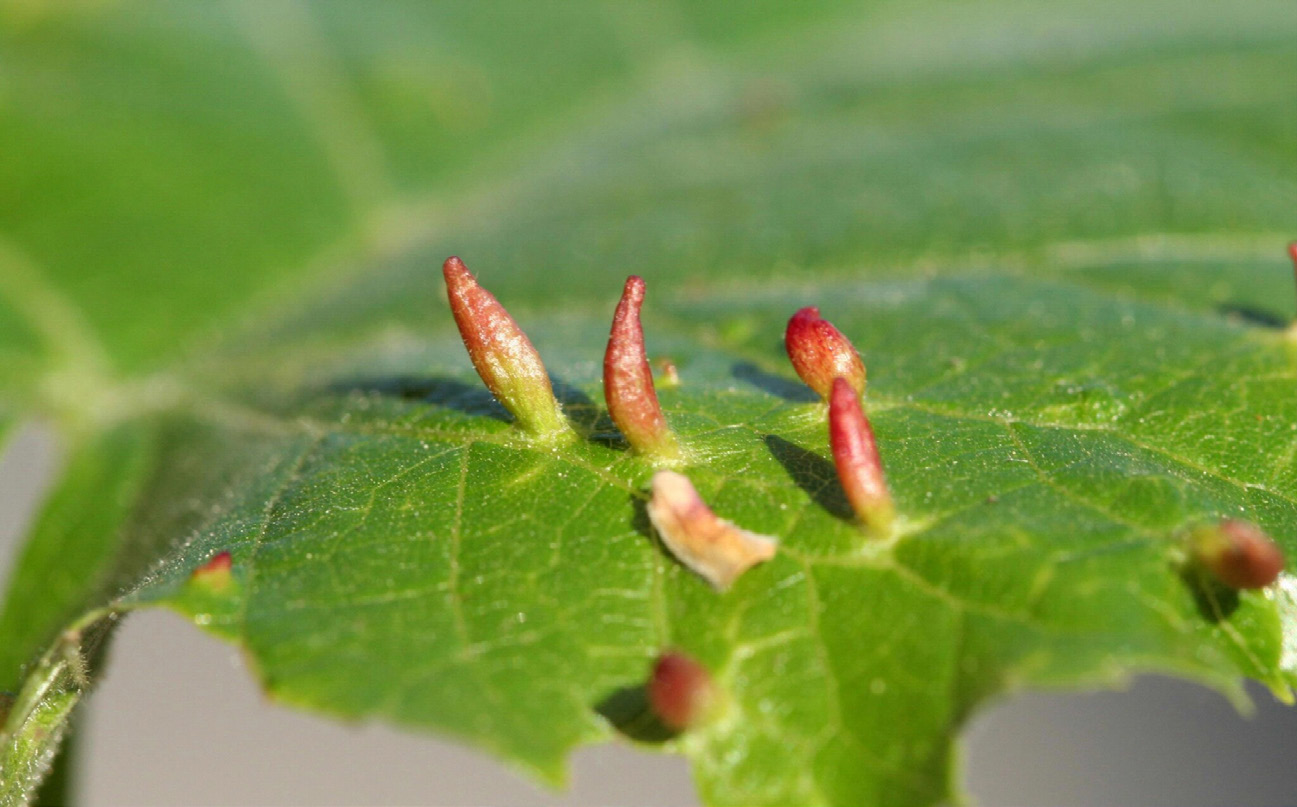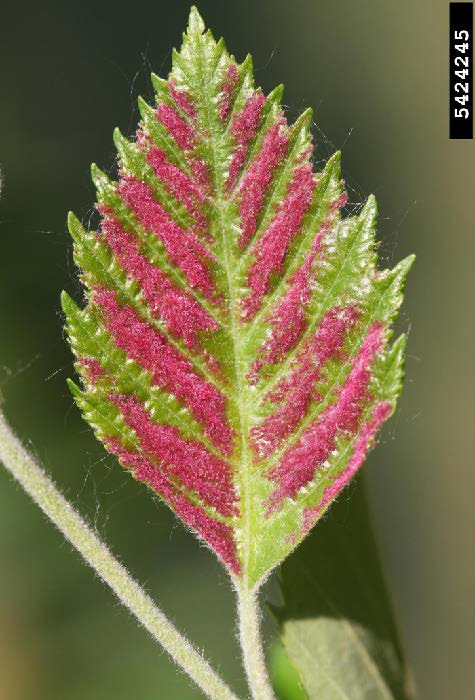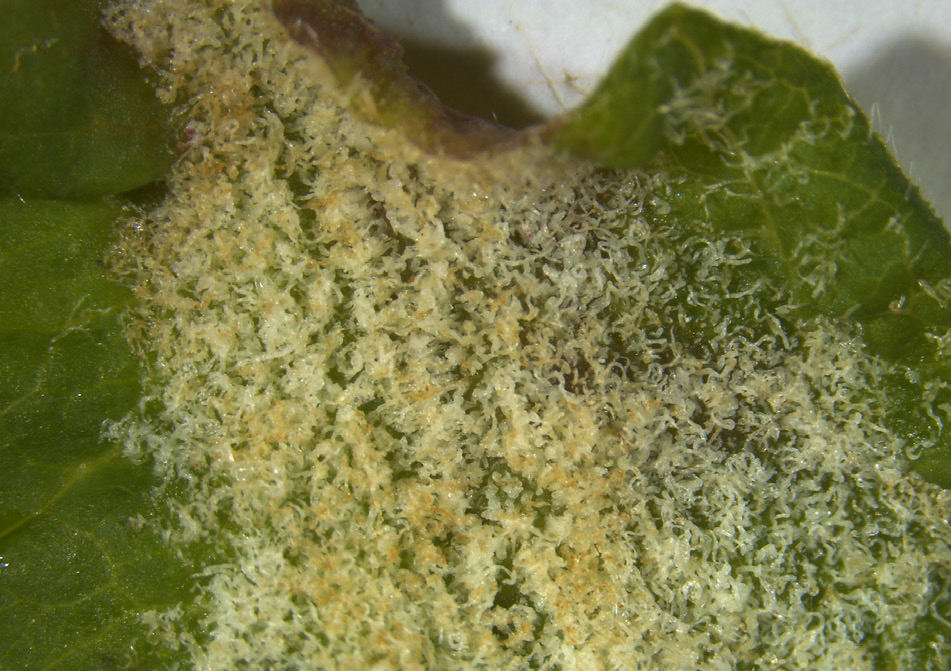Eriophyid Mites (Family Eriophyidae)

Figure 1. Finger-like galls on lilac. Photo by M. Zubrik, FRI, Slovakia, Bugwood.

Figure 3. Felt-like galls on river birch. Photo by S. Katovich, Bugwood.
Host
Several hosts.
Damage and Symptoms
The damage caused from these microscopic mites rarely causes injury to the plant. The mites will pierce the leaf tissue and feed within the damaged areas. This results in either distortions or galls that can take the form of a blister, finger, hair, pouch, felt-like patch, witches’ broom, or bump.
Life Cycle
Mites typically overwinter as fertilized adult females under bud scales or other covered areas. The females will emerge following bud break, and several generations are produced throughout the growing season.
Management
Galls or injuries sustained by the mites are generally cosmetic and are not known to harm the tree. If practical, galls can be pruned out and discarded. Dormant oils can be applied in early spring to control the overwintering mites if several branches and leaves are affected. A miticide labeled for the host can be used at bud break to manage emerging females.

Figure 2. Erinea galls on Viburnum. Photo by Laurie Kerzicnik.
Further Information
To learn more about the topics discussed on this page, contact the Schutter Diagnostic Lab. If you suspect an infestation on your property, contact your local extension agent, the Schutter Diagnostic Lab at Montana State University, or the Montana Department of Agriculture.
This insect fact sheet is also available as a printable PDF (759KB).
Disclaimer: These recommendations are provided only as a guide. It is always the pesticide applicator’s responsibility, by law, to read and follow all current label directions for the specific pesticide being used. The authors and Montana State University assume no liability resulting from the use of these recommendations. The Montana State University Extension Service is an ADA/ EO/AA/Veteran’s Preference Employer and Provider of Educational Outreach.
